Imagine if you could always outpace your competitors by making smarter, faster marketing decisions. In 2025, the secret to gaining that edge is no longer guesswork—it's harnessing the power of marketing report tools.
Manual reporting is slow and error-prone. With data pouring in from every channel, marketers need real-time, cross-channel insights to stay ahead. The right marketing report tools can turn overwhelming data into actionable strategies that drive measurable growth.
In this article, you'll discover the top 9 marketing report tools for 2025. We’ll compare features, pricing, pros and cons, and best-fit scenarios, helping you find the ideal solution for your business. Ready to unlock your next level of marketing success? Let's dive in.
Why Marketing Report Tools Matter in 2025
Today’s marketing landscape is more complex than ever. Marketers face a staggering volume of data from paid ads, social media, email, web analytics, and CRM platforms. This data explosion has made manual reporting nearly impossible to sustain. Over 90% of marketers now depend on analytics tools to keep up with campaign measurement and optimization. As AI and automation become standard, real-time insights are now essential for fast, informed decisions. If you want to stay ahead, it’s crucial to understand the trends shaping this evolution—explore the latest Marketing Analytics Trends for 2025 to see where the industry is heading. In this environment, marketing report tools have become indispensable for turning scattered data into actionable intelligence.
The Evolving Landscape of Marketing Analytics
Modern marketing report tools centralize data from multiple platforms, allowing marketers to view all key metrics in one place. This unification streamlines analysis and eliminates tedious manual processes. Automated reporting reduces human error, while cross-channel attribution makes it easier to connect marketing efforts to ROI. Teams can collaborate more transparently, sharing unified dashboards that foster better communication and faster decision-making. As marketing grows more data-driven, these tools empower organizations to focus on strategy rather than repetitive tasks.
- Unified dashboards for all channels
- Automated data collection and reporting
- Enhanced accuracy and reliability
- Cross-channel performance measurement
With these capabilities, marketing report tools are redefining how teams work in 2025.
Key Benefits of Modern Marketing Reporting Tools
Without the right marketing report tools, teams quickly become overwhelmed. Manual spreadsheet work drains productivity and leads to inconsistent results. Data silos make it difficult to analyze campaigns holistically or identify optimization opportunities. Connecting marketing metrics to broader business outcomes becomes a constant struggle, increasing the risk of costly errors and missed insights. As campaigns grow more complex, scalability suffers, limiting your ability to expand or serve multiple clients effectively.
- Time wasted on repetitive tasks
- Fragmented, siloed data sources
- Difficulty measuring true ROI
- Higher risk of reporting mistakes
Choosing robust marketing report tools helps you avoid these pitfalls and unlocks greater efficiency.
Common Challenges Without the Right Tools
Selecting the best marketing report tools for your business means focusing on a few critical factors. Start by ensuring the tool integrates seamlessly with your existing marketing stack. Look for customizable dashboards and automated reporting features that match your workflow. Consider scalability, especially if you manage multiple clients or large datasets. Pricing models should align with your business size and needs, whether that’s per client, per user, or based on data volume. Finally, prioritize solutions that offer strong support, training, and ease of use for both technical and non-technical team members.
- Seamless integration with current platforms
- Customizable and automated dashboards
- Scalable for future growth
- Transparent pricing models
- Comprehensive support and training
By evaluating these criteria, you can confidently select marketing report tools that will drive growth and measurable results.
Types of Marketing Reporting Tools & Key Features
The world of marketing report tools is rapidly evolving, offering marketers a sophisticated arsenal to transform raw data into real growth. With the right solution, teams can streamline analytics, save time, and uncover actionable insights that keep them ahead in 2025.
Overview of Tool Categories
Marketing report tools fall into several main categories, each serving unique analytical needs. Analytics platforms such as Google Analytics and Mixpanel focus on tracking web and user behavior. Data visualization tools, including Tableau and Looker Studio, present data in interactive dashboards for clearer insights. Attribution software like Ruler Analytics maps customer journeys from first touch to revenue, helping marketers understand true ROI.
Agency-focused platforms, such as AgencyAnalytics and TapClicks, streamline client reporting and project management for multi-account environments. Data integration and transformation tools—Funnel being a prime example—pull and normalize data from diverse sources, ensuring consistency and scalability. By understanding these categories, marketers can identify which marketing report tools best align with their current and future requirements.
Essential Features to Consider
When evaluating marketing report tools, focus on features that enable efficient, error-free, and insightful reporting. Key capabilities include:
| Feature | Benefit |
|---|---|
| Automated data collection & normalization | Reduces manual work, ensures accuracy |
| Custom report templates & scheduling | Saves time, standardizes reporting |
| AI-powered insights & predictive analytics | Reveals trends, optimizes performance |
| White-label & client-facing options | Enhances professionalism |
| Security & compliance tools | Protects sensitive information |
Seamless integration with existing platforms is crucial for a unified view. Equally important are customizable dashboards, automated alerts, and robust data governance. The ideal marketing report tools offer a balance of flexibility, automation, and security.
The Role of AI and Automation in 2025
AI and automation have become game changers for marketing report tools. Modern platforms leverage machine learning to generate campaign recommendations, automate anomaly detection, and provide predictive analytics that forecast trends and performance. Natural language explanations help non-technical users quickly interpret complex data, making insights more accessible across teams.
Continuous updates ensure compatibility with evolving APIs and data sources. For a deeper dive on how AI and machine learning are reshaping analytics platforms, see this resource on AI and Machine Learning in Marketing Analytics. Ultimately, AI-driven marketing report tools empower marketers to act faster and smarter.
How These Tools Drive Better Marketing Outcomes
Adopting advanced marketing report tools delivers measurable improvements across the board. Teams benefit from real-time data, enabling more agile and informed decisions. Granular performance tracking increases alignment with business objectives and boosts ROI by optimizing spend where it matters most.
Transparent, on-demand reporting enhances client satisfaction and trust. Agencies using automation tools report up to 50% time savings, allowing more focus on strategy. In a competitive landscape, the right marketing report tools become the backbone of scalable, results-driven marketing.
Top 9 Marketing Report Tools to Boost Results in 2025
Choosing from the vast array of marketing report tools can be daunting, especially as data complexity grows in 2025. The right solution can transform raw numbers into actionable insights, enabling teams to react fast and outperform competitors. Below, we break down the top 9 marketing report tools—comparing features, pricing, and best-fit scenarios—to help you find your perfect match.
1. Funnel
Funnel is a powerhouse among marketing report tools for agencies and enterprises seeking automated, scalable analytics. It centralizes data from hundreds of platforms—paid ads, social, CRM, and more—eliminating manual data prep.
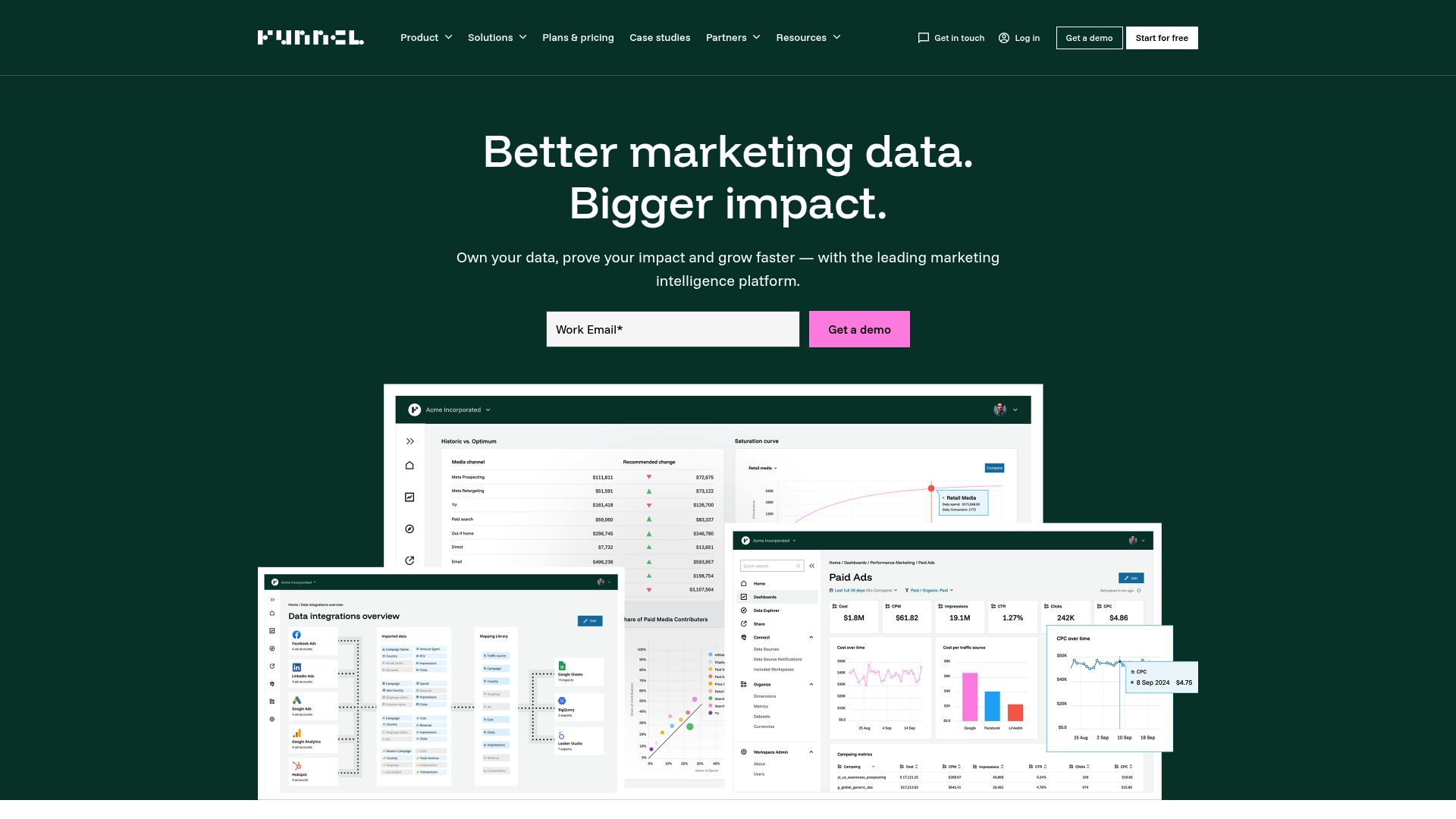
Pricing: Custom, tailored to business size and needs.
Core Features:
- Automated cross-platform data collection
- Data normalization and transformation
- No-code setup and managed connectors
- Budget tracking and performance benchmarking
Key Benefits:
Funnel unifies marketing and business data, supporting advanced analysis at scale. Its automation means teams can focus on strategy, not spreadsheets.
Target Audience:
Agencies, large marketing teams, and data analysts who need robust, automated reporting.
Pros:
- No engineering required
- Powerful integration capabilities
- Responsive support
Cons:
- Premium pricing
- May be more advanced than needed for small businesses
Example:
Publicis Sweden leveraged Funnel for advanced analytics, scaling insights across global campaigns.
For teams focused on ad campaign performance, reviewing advertising analysis best practices can complement Funnel’s robust analytics capabilities.
2. AgencyAnalytics
AgencyAnalytics stands out among marketing report tools for agencies managing multiple clients. It offers 70+ integrations and built-in SEO tools to deliver client-ready reports fast.
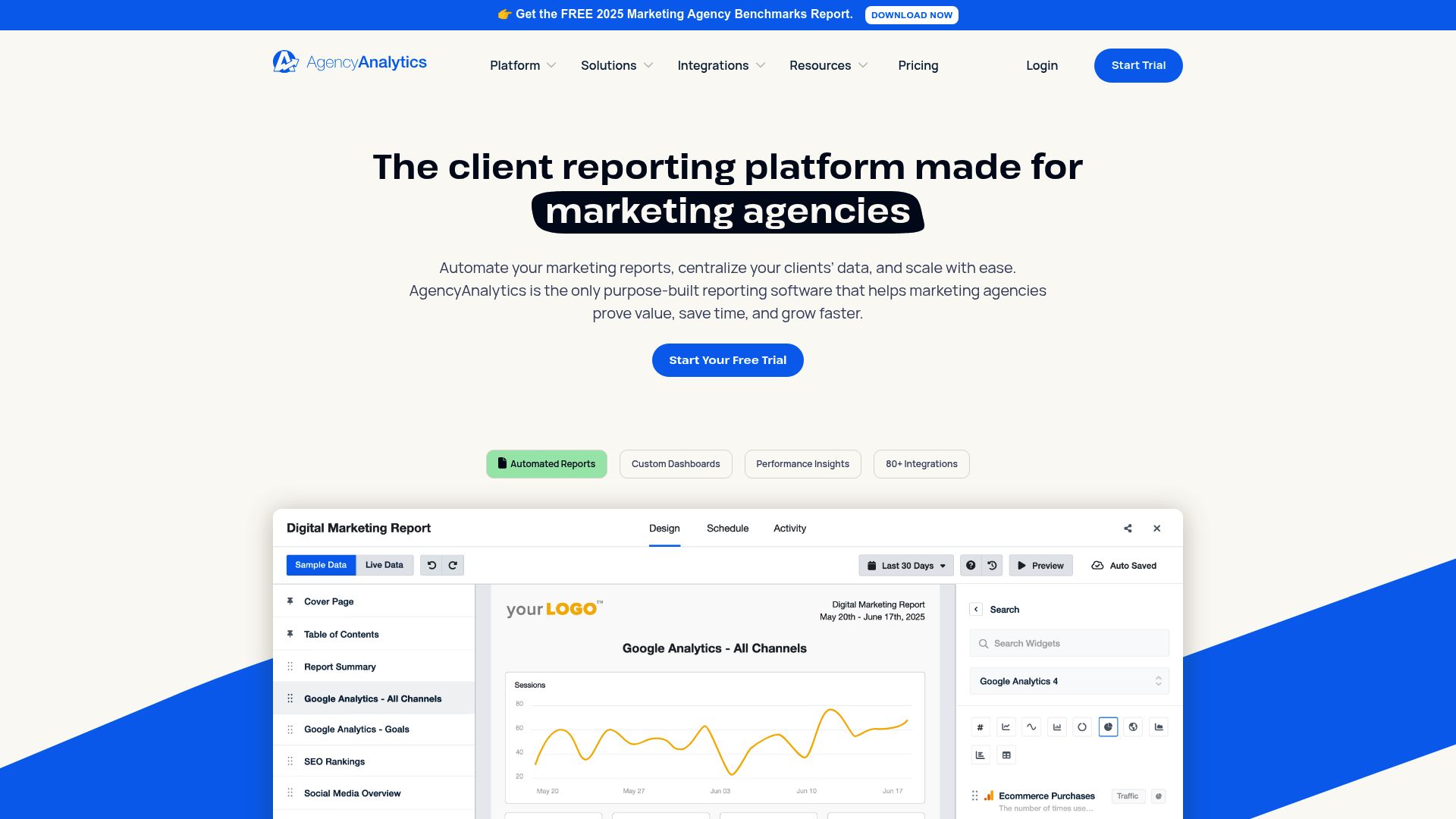
Pricing:
Freelancer $10/mo, Agency $15/mo, Enterprise custom.
Core Features:
- Customizable dashboards
- SEO rank tracking and site audits
- Automated, white-label reporting
Key Benefits:
Teams can automate tedious reporting and impress clients with live dashboards and clear visuals.
Target Audience:
Marketing agencies, consultants, and freelancers.
Pros:
- Affordable for small agencies
- Easy to use
- Strong SEO focus
Cons:
- Limited data transformation
- Pricing per client can add up
Example:
Agencies report improved client retention due to streamlined, automated reports.
3. Looker Studio (formerly Google Data Studio)
Looker Studio remains a favorite among marketing report tools for SMBs and marketers who want flexibility at minimal cost.
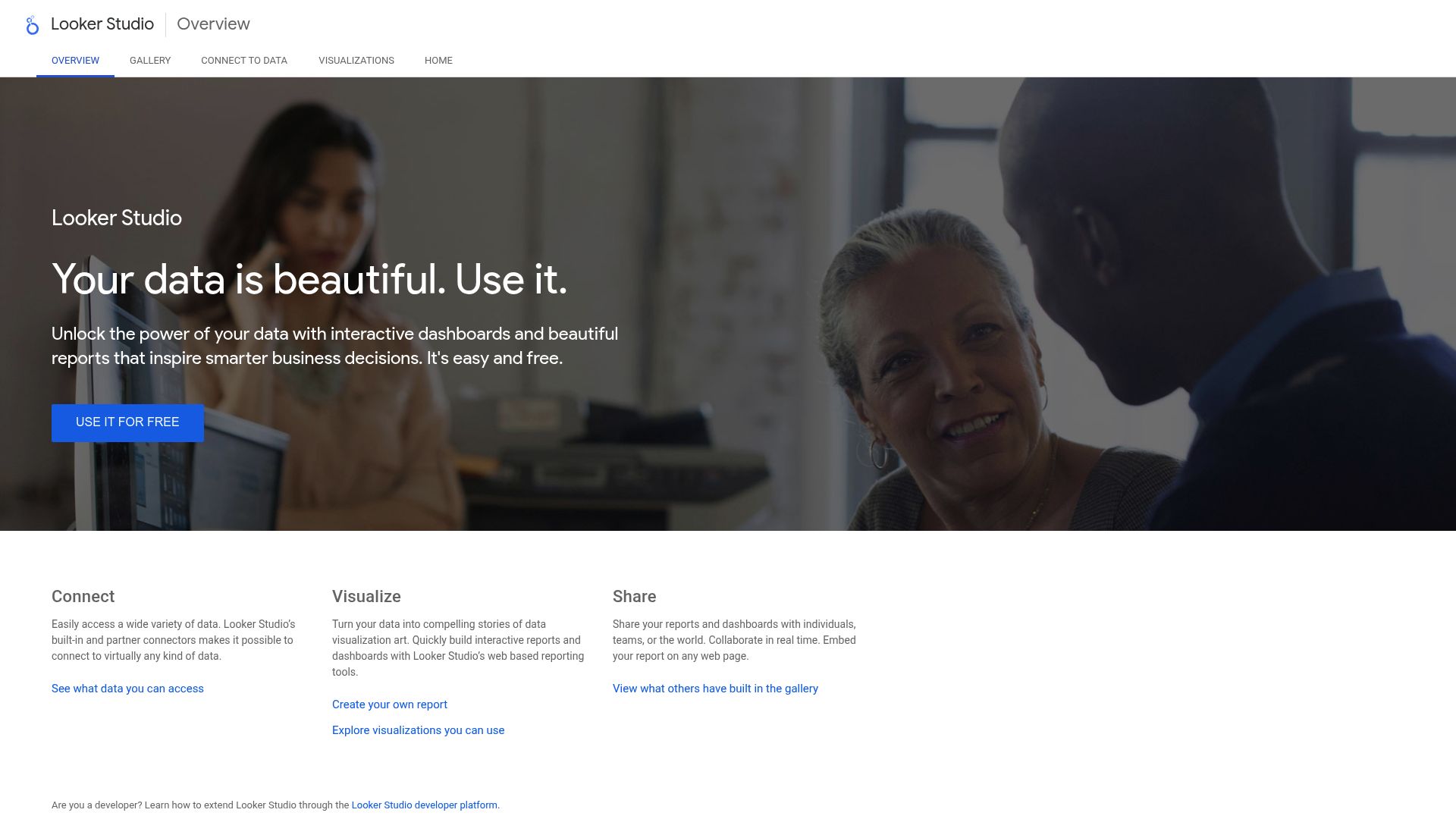
Pricing:
Free for basic use; paid upgrades via partner connectors.
Core Features:
- Custom dashboards and drag-and-drop builder
- Seamless integration with Google Analytics, Ads, and Search Console
- Report sharing and embedding
Key Benefits:
Looker Studio provides cost-effective, customizable reporting, especially for teams already using Google’s marketing suite.
Target Audience:
Small businesses, marketers seeking free or low-cost data visualization.
Pros:
- No cost for basic features
- Easy sharing and collaboration
- Large template gallery
Cons:
- Manual data prep for complex needs
- Limited governance and struggles with large datasets
Example:
Agencies use Looker Studio for quick, shareable Google data reports.
4. Tableau
Tableau is a leader in advanced data visualization among marketing report tools, trusted by enterprises for deep analytics.
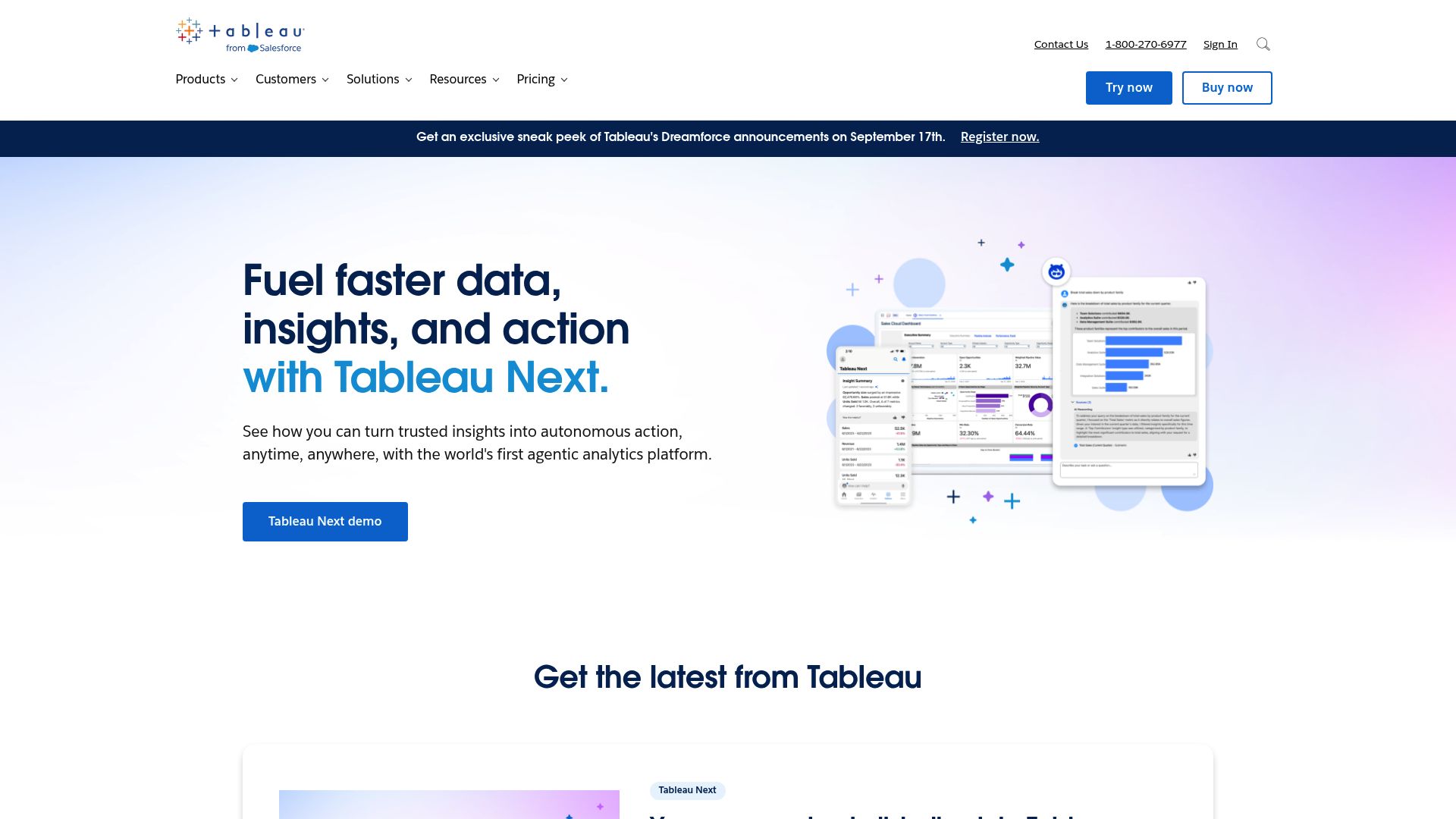
Pricing:
Creator $70/mo, Explorer $35/mo, Viewer $12/mo.
Core Features:
- Interactive dashboards
- AI analytics and Salesforce integration
- Scalable deployment (cloud/on-premises)
Key Benefits:
Tableau offers powerful visualizations and extensive customization, making it ideal for organizations needing secure, organization-wide analytics.
Target Audience:
Enterprises, data-driven agencies, and analytics teams.
Pros:
- Enterprise scalability
- Strong data governance
- Advanced visualizations
Cons:
- Steep learning curve
- Requires technical expertise
- Higher price point
Example:
Large agencies use Tableau for comprehensive, cross-department analytics.
5. TapClicks
TapClicks is an end-to-end solution among marketing report tools, designed for agencies and brands with complex reporting and compliance needs.
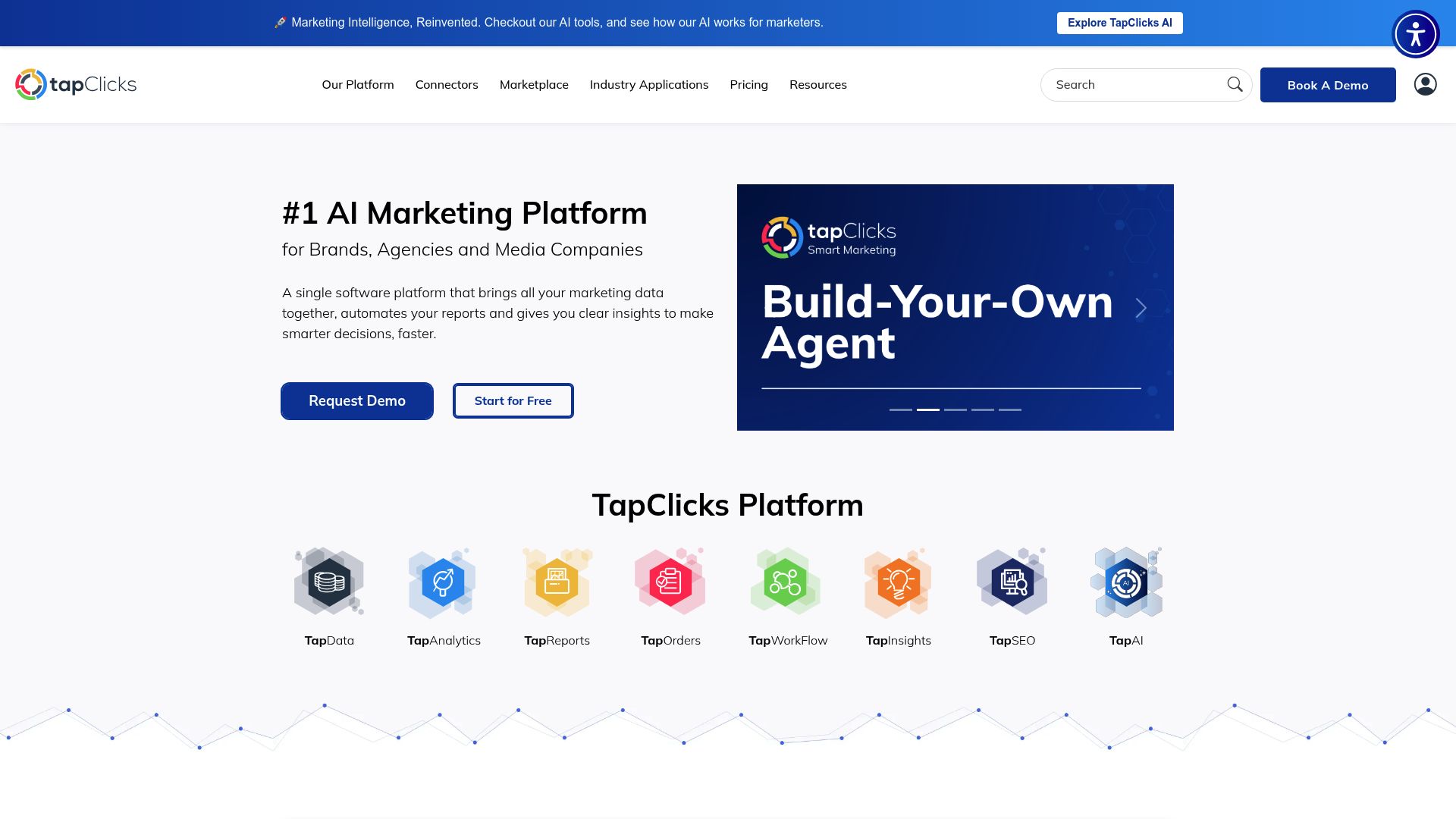
Pricing:
Custom, based on size and requirements.
Core Features:
- Data management and ETL
- AI-powered insights and workflow automation
- White-labeling and HIPAA compliance
Key Benefits:
TapClicks supports unified reporting across hundreds of clients, making it ideal for regulated industries and multi-location brands.
Target Audience:
Large agencies, enterprises, healthcare marketers, and multi-location organizations.
Pros:
- Powerful for enterprise-scale needs
- Supports operational workflows
- Compliance-ready features
Cons:
- Technical setup required
- Overkill for small teams
Example:
Agencies use TapClicks for unified, compliant reporting in regulated sectors.
6. DashThis
DashThis makes the list of top marketing report tools for its user-friendly approach to automated reporting and client management.
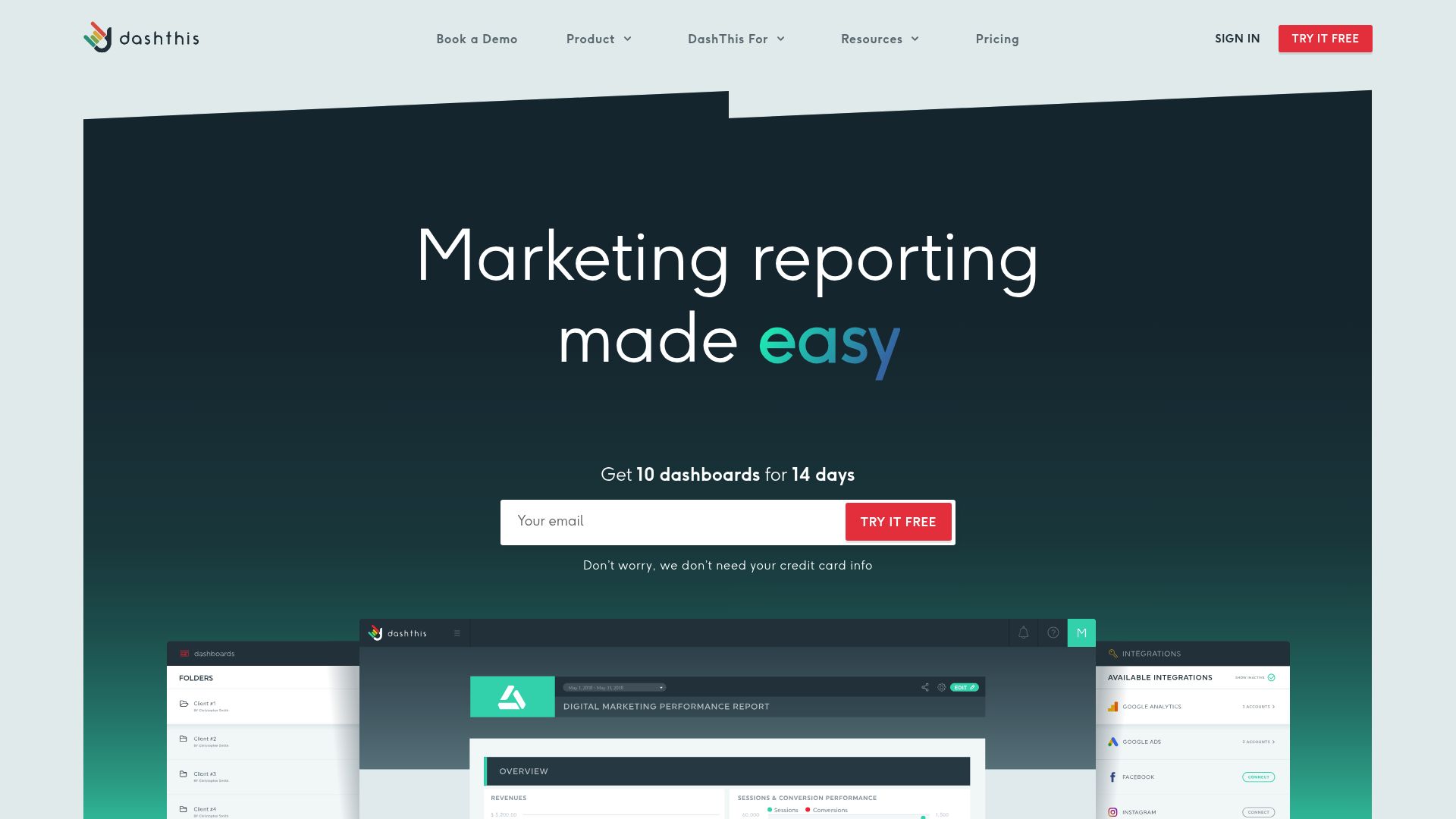
Pricing:
Individual $33/mo, Professional $109/mo, Business $209/mo, Standard $339/mo.
Core Features:
- Automated reporting with 40+ integrations
- Custom dashboards
- White-labeling and sharing options
Key Benefits:
DashThis streamlines multi-client reporting workflows, allowing agencies to deliver insights quickly.
Target Audience:
Agencies, consultants, and marketers managing several campaigns.
Pros:
- Fast onboarding
- Easy to use
- Good customer support
Cons:
- Limited for advanced analytics
- Higher cost at scale
Example:
Agencies appreciate DashThis for managing multiple client reports with minimal setup.
7. Mixpanel
Mixpanel is a standout in marketing report tools for teams focused on product and user analytics. It excels at tracking user journeys and behavior in real time.
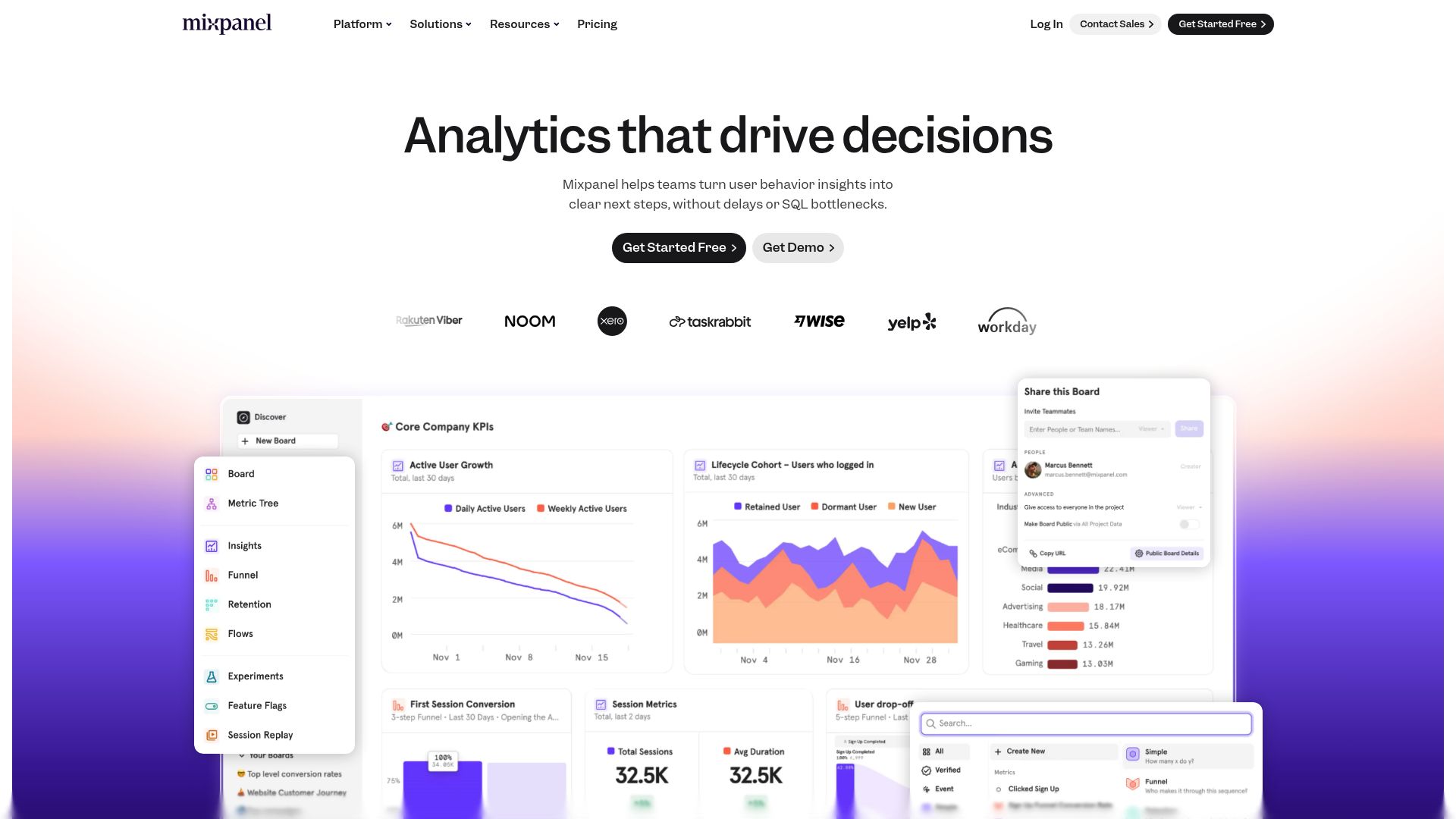
Pricing:
Free tier; paid plans from $25/mo.
Core Features:
- Product and user analytics
- Funnel and retention tracking
- Event-based reporting and A/B testing
Key Benefits:
Mixpanel offers granular insights into user behavior, making it invaluable for SaaS and product teams.
Target Audience:
Product marketers, SaaS companies, and teams optimizing user experience.
Pros:
- Detailed cohort analysis
- Real-time reporting
- Flexible event tracking
Cons:
- Less focus on traditional marketing channels
- Setup learning curve
Example:
SaaS marketers use Mixpanel to boost product features and retention.
8. Klipfolio
Klipfolio is one of the most flexible marketing report tools for SMBs and agencies wanting custom dashboards and affordable BI.
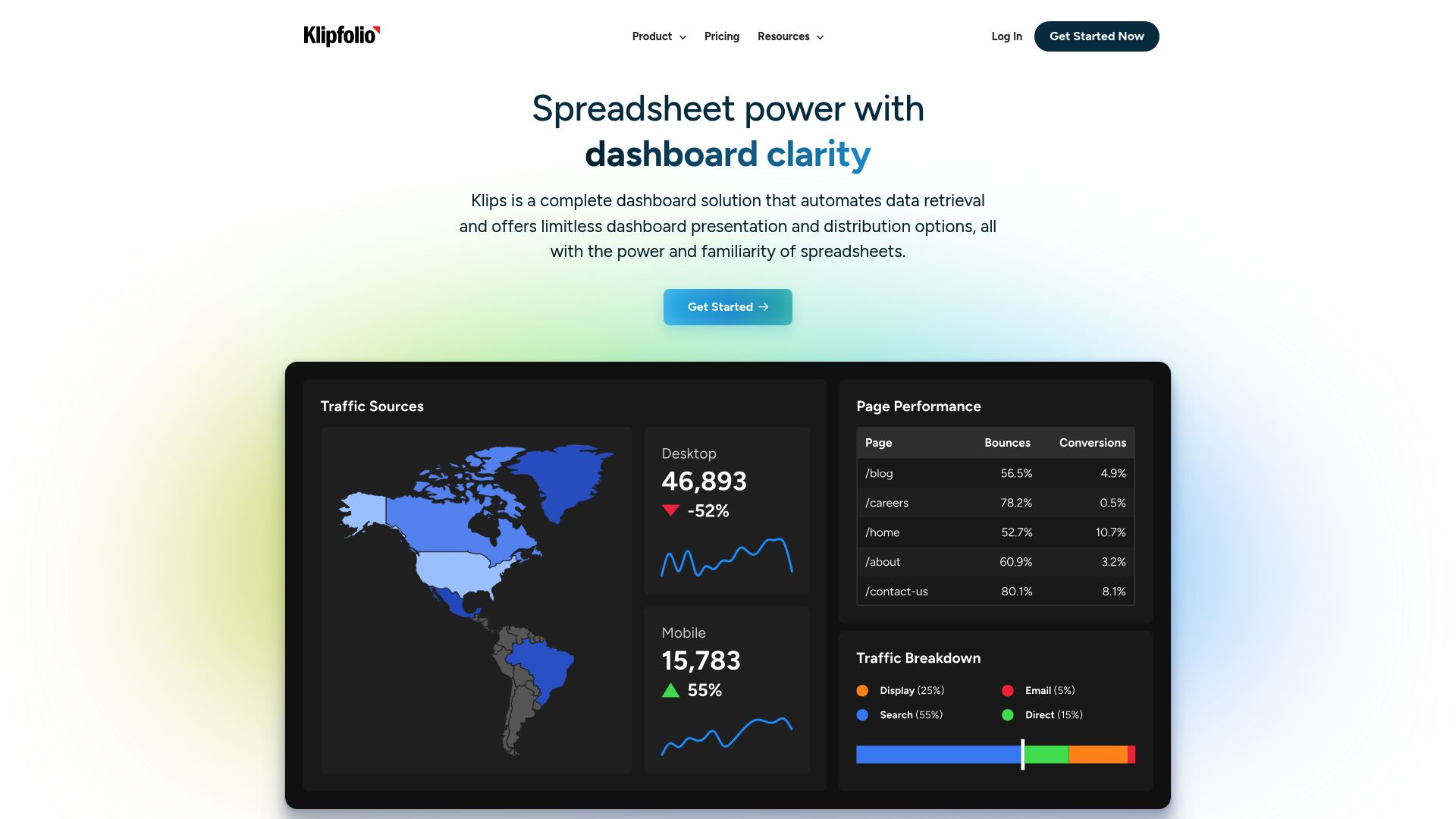
Pricing:
Freemium; Plus $99/mo, Pro $229/mo, Custom available.
Core Features:
- Custom dashboards and pre-built templates
- 100+ data source integrations
- Real-time monitoring and collaboration tools
Key Benefits:
Klipfolio enables businesses to consolidate KPIs across channels, with an accessible pricing model and strong visualization options.
Target Audience:
Small businesses, agencies, and teams needing flexible dashboards.
Pros:
- Accessible pricing
- Easy-to-build custom reports
- Strong template library
Cons:
- Advanced features on higher plans
- Limited data transformation options
Example:
Marketers use Klipfolio to monitor cross-channel performance at a glance.
9. Ruler Analytics
Ruler Analytics specializes in attribution, making it a unique contender among marketing report tools for connecting leads and revenue to marketing touchpoints.
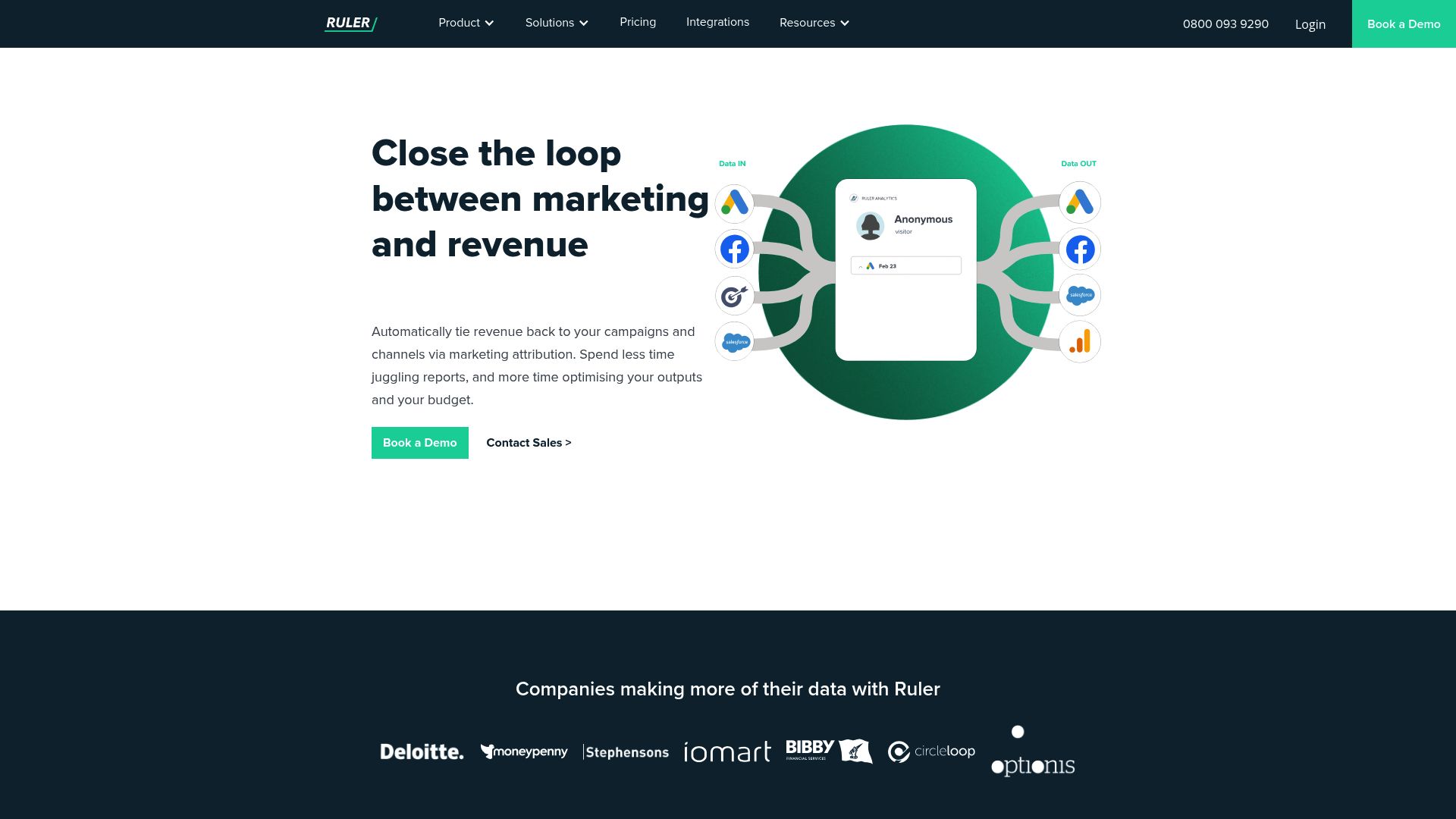
Pricing:
Starts at £199/mo, with annual and agency discounts.
Core Features:
- Marketing attribution and visitor-level tracking
- Revenue analytics and CRM integration
- Closed-loop reporting
Key Benefits:
Ruler Analytics excels at tying marketing efforts directly to ROI, including both online and offline channels.
Target Audience:
Agencies, performance marketers, and businesses focused on attribution.
Pros:
- Detailed attribution capabilities
- Integrates with major CRMs and analytics platforms
Cons:
- Higher pricing for small businesses
- Focused more on attribution than visualization
Example:
Marketers use Ruler Analytics to prove ROI and optimize channel spend with revenue-based reports.
Comparison Table: Top Marketing Report Tools at a Glance
| Tool | Best For | Pricing | Key Strength |
|---|---|---|---|
| Funnel | Agencies, Enterprises | Custom | Data integration, scale |
| AgencyAnalytics | Agencies, Consultants | $10–$15/mo+ | SEO & client reporting |
| Looker Studio | SMBs, Google users | Free (+upgrades) | Google integration |
| Tableau | Enterprises, Analytics | $12–$70/mo | Deep visualization |
| TapClicks | Agencies, Regulated | Custom | Compliance, automation |
| DashThis | Agencies, Consultants | $33–$339/mo | Simplicity, onboarding |
| Mixpanel | SaaS, Product Teams | Free–$25/mo+ | User journey analytics |
| Klipfolio | SMBs, Agencies | Free–$229/mo+ | Custom dashboards |
| Ruler Analytics | Attribution, Agencies | £199/mo+ | ROI attribution |
Selecting the right marketing report tools is crucial for transforming data overload into growth-driving insight. Evaluate your needs and team skills to choose a solution that delivers both immediate results and long-term scalability.
How to Choose the Right Marketing Report Tool for Your Business
Selecting the best marketing report tools can be transformative for your business. The right choice turns scattered data into actionable insights, empowering your team to make smarter, faster decisions. Here’s a step-by-step guide to streamline your selection process.
Assessing Your Reporting Needs
Start by clarifying what you expect from marketing report tools. Identify your primary goals: Are you tracking campaign performance, measuring ROI, or focusing on client reporting? List your key data sources—think paid ads, social media, CRM, and web analytics.
Consider how often you need reports and who will use them. Internal teams may need granular data, while clients often prefer high-level summaries. Evaluate your team’s technical skills and available time for setup and maintenance.
As you map requirements, remember that integrating sales data can enhance your analysis. For a deeper dive on this, see Understanding role of sales data. A clear needs assessment ensures you invest in marketing report tools that align with your objectives.
Comparing Pricing Models and ROI
Pricing for marketing report tools varies widely. Some platforms charge per user, others per client or by data volume. Understanding these structures helps you forecast costs and avoid surprises.
| Model | Best For | Potential Drawback |
|---|---|---|
| Per User | Small teams | Scales up with growth |
| Per Client | Agencies | Can add up with clients |
| Data Volume | Large enterprises | May penalize heavy users |
Factor in training, support, and hidden fees. Calculate potential time savings—automated tools often free up to 50% of reporting hours. When weighing options, compare subscription versus one-time purchase models. The right marketing report tools deliver strong ROI by making your workflows more efficient.
Evaluating Support, Security, and Compliance
Robust support and security are non-negotiable features in marketing report tools. Assess each vendor’s reputation for customer service and timely product updates. Look for features like data encryption, user permissions, and compliance with relevant standards.
Transparent privacy policies and clear data ownership terms are essential. If your business operates in regulated industries, prioritize platforms that offer compliance certifications. Training resources, onboarding assistance, and active community forums can make adoption smoother.
Understanding common analytics terminology can also help you evaluate tools more effectively—review Top retail analytics terms explained for clarity. Strong support and compliance features reduce risk and build trust with stakeholders.
Making the Final Decision
Once you’ve shortlisted a few marketing report tools, test them with real data and typical workflows. Gather feedback from marketers, analysts, and clients to ensure the solution fits all user needs.
Prioritize tools that align with your business goals and demonstrate measurable impact. Stay agile; revisit your choices as your marketing environment evolves. Sometimes, using a combination of specialized tools—such as one for product analytics and another for visualization—yields the best results.
A thoughtful selection process ensures your marketing report tools will scale with your business and deliver value year after year.
Future Trends in Marketing Reporting & Analytics
As we look ahead, the landscape for marketing report tools is rapidly evolving. Keeping pace with the latest advancements is critical for businesses aiming to remain competitive. Let’s explore the emerging trends that will define how marketers analyze, report, and act on their data in 2025.
AI-Driven Insights and Predictive Analytics
Artificial intelligence is transforming how marketing report tools deliver value. Marketers now expect more than just descriptive analytics—they want predictive and prescriptive insights that guide their next moves. AI-driven features can quickly identify trends, anomalies, and optimization opportunities, allowing teams to adapt strategies in real time.
For example, marketing report tools are integrating advanced machine learning to forecast campaign performance and suggest improvements on the fly. Tools like Funnel and Tableau are already incorporating AI-powered recommendations, making it easier to turn raw data into strategic action. To see how AI is revolutionizing analytics in ecommerce, check out AI and ecommerce insights.
Real-Time, Cross-Channel Attribution
Modern marketing strategies span paid ads, organic search, social media, and offline touchpoints. Marketing report tools must now support real-time, cross-channel attribution to give a complete view of the customer journey. This trend is driven by marketers’ need to connect every interaction to business outcomes, not just vanity metrics.
Platforms such as Ruler Analytics and TapClicks are at the forefront, enabling closed-loop attribution that links revenue to specific campaigns. Real-time reporting empowers teams to optimize budgets and messaging on the go. As marketing report tools evolve, expect even tighter integration across web, mobile, and CRM data streams.
Self-Service and No-Code Platforms
The demand for self-service analytics is surging. Marketers want to build custom dashboards, automate reporting, and access insights—all without relying on IT support. As a result, marketing report tools are embracing no-code interfaces and intuitive drag-and-drop builders.
Solutions like Funnel and DashThis exemplify this trend by making it easy for any marketer to connect data sources and visualize results independently. This democratization of analytics reduces bottlenecks and speeds up decision-making. The rise of self-service marketing report tools will continue to lower barriers for teams of all sizes.
Integration with Business Intelligence and Operations
The future of marketing report tools lies in seamless integration with broader business intelligence and operational platforms. Marketers increasingly need to connect campaign metrics with sales, finance, and customer success data to prove ROI and drive growth.
Unified dashboards are becoming the norm, bridging marketing, sales, and finance into a single source of truth. According to Global Marketing Analytics Software Market Share, the adoption of integrated analytics solutions is accelerating as organizations seek more holistic insights. Expect marketing report tools to further align with enterprise BI systems, supporting deeper analysis and more strategic decisions.